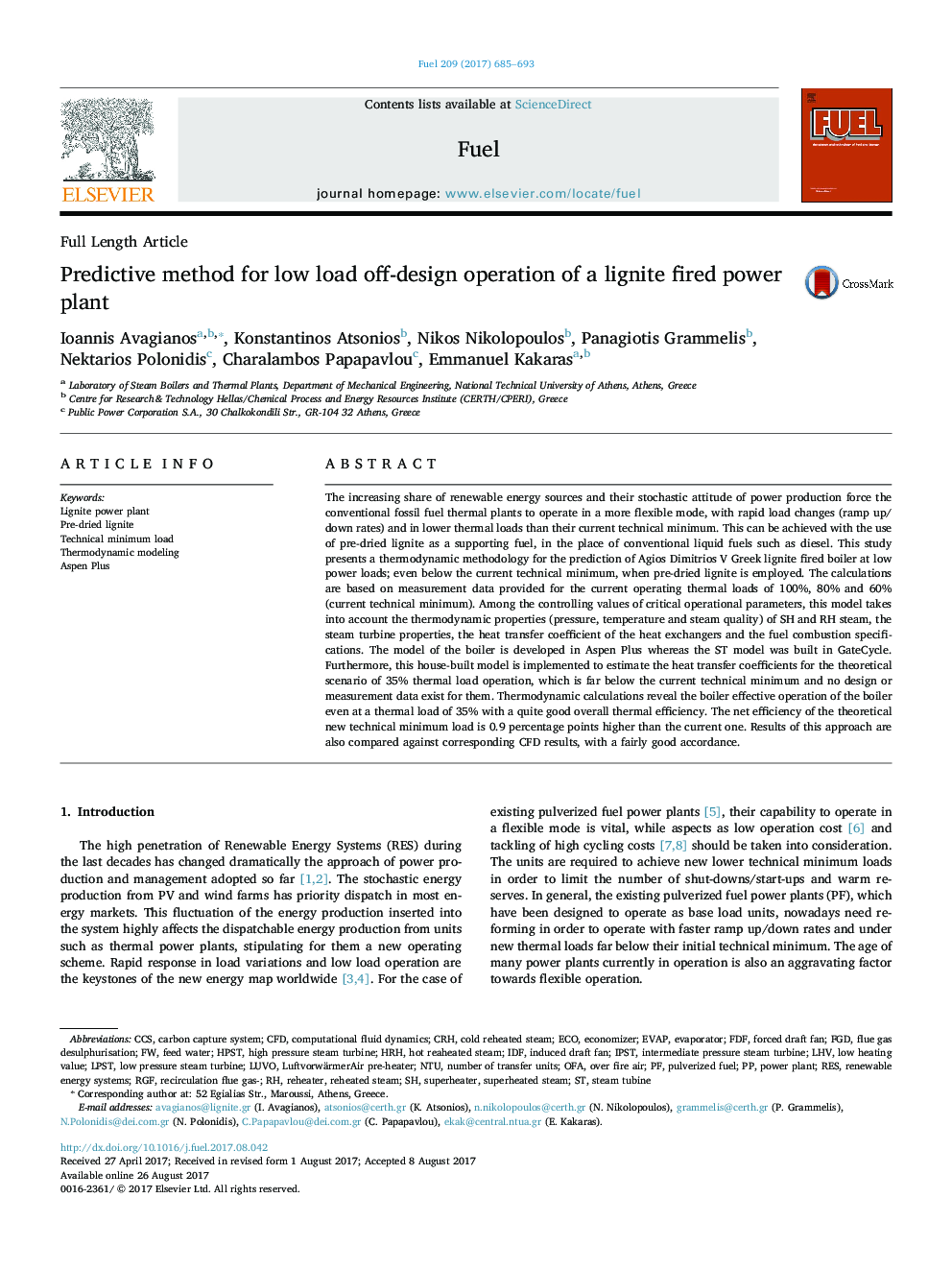| Article ID | Journal | Published Year | Pages | File Type |
|---|---|---|---|---|
| 6474037 | Fuel | 2017 | 9 Pages |
â¢Thermodynamic model for the off-design simulation of a lignite fired power plant.â¢Îµ-NTU method for boiler heat exchangers network simulation in off-design operation.â¢Predictive methodology for power plant operation at very low load.â¢Good agreement with CFD simulations on boiler modeling.â¢New technical minimum load for existing lignite power plant with pre-dried lignite.
The increasing share of renewable energy sources and their stochastic attitude of power production force the conventional fossil fuel thermal plants to operate in a more flexible mode, with rapid load changes (ramp up/down rates) and in lower thermal loads than their current technical minimum. This can be achieved with the use of pre-dried lignite as a supporting fuel, in the place of conventional liquid fuels such as diesel. This study presents a thermodynamic methodology for the prediction of Agios Dimitrios V Greek lignite fired boiler at low power loads; even below the current technical minimum, when pre-dried lignite is employed. The calculations are based on measurement data provided for the current operating thermal loads of 100%, 80% and 60% (current technical minimum). Among the controlling values of critical operational parameters, this model takes into account the thermodynamic properties (pressure, temperature and steam quality) of SH and RH steam, the steam turbine properties, the heat transfer coefficient of the heat exchangers and the fuel combustion specifications. The model of the boiler is developed in Aspen Plus whereas the ST model was built in GateCycle. Furthermore, this house-built model is implemented to estimate the heat transfer coefficients for the theoretical scenario of 35% thermal load operation, which is far below the current technical minimum and no design or measurement data exist for them. Thermodynamic calculations reveal the boiler effective operation of the boiler even at a thermal load of 35% with a quite good overall thermal efficiency. The net efficiency of the theoretical new technical minimum load is 0.9 percentage points higher than the current one. Results of this approach are also compared against corresponding CFD results, with a fairly good accordance.
